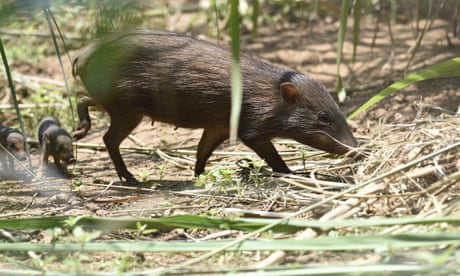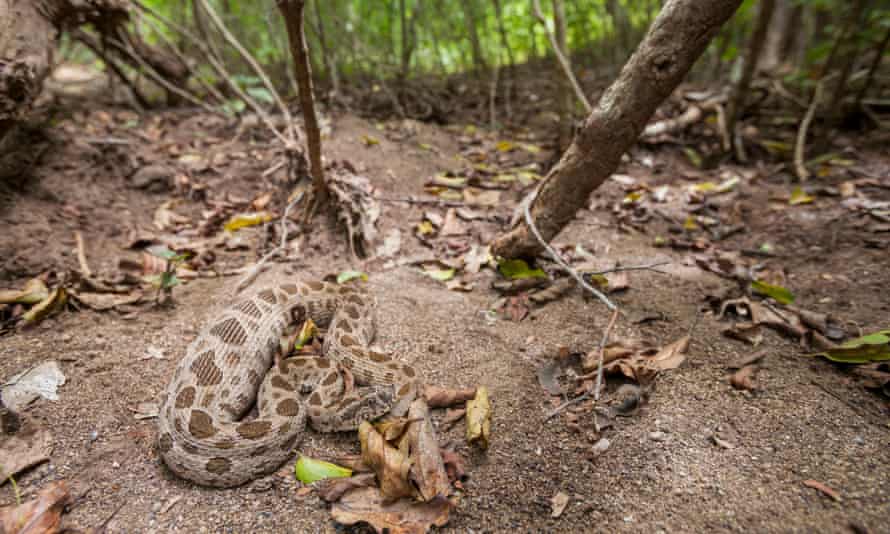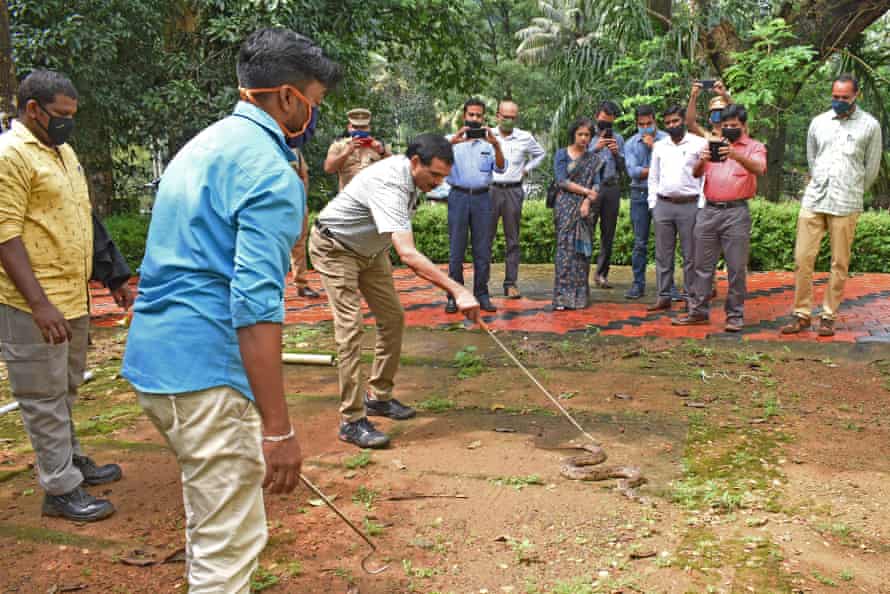Review evaluates the evidence for an intensifying Indian Ocean water cycle
Report calls for better integration of observations, models, and paleo proxies

IMAGE: RECOVERY OF THE SOUTH OMBAI MOORING, TOPPED WITH AN ACOUSTIC DOPPLER CURRENT METER (ADCP) TO MEASURES OCEAN CURRENTS, ABOARD THE INDONESIAN RESEARCH VESSEL BARUNA JAYA I. OBSERVATIONAL DATA IN THE... view more
CREDIT: PHOTO CREDIT: JANET SPRINTALL
The Indian Ocean has been warming much more than other ocean basins over the last 50-60 years. While temperature changes basin-wide can be unequivocally attributed to human-induced climate change, it is difficult to assess whether contemporary heat and freshwater changes in the Indian Ocean since 1980 represent an anthropogenically-forced transformation of the hydrological cycle. What complicates the assessment is factoring in natural variations, regional-scale trends, a short observational record, climate model uncertainties, and the ocean basin's complex circulation.
A new review paper takes a broad look at whether heat and freshwater changes in the Indian Ocean are consistent with the increase in rainfall that is expected in response to anthropogenic global warming or whether these changes are due to natural variability on multi-decadal and other timescales along with other factors. That distinction has "big implications for climate risk assessment and for the densely populated regions around the Indian Ocean that are vulnerable to the effects of climate change," says Caroline Ummenhofer, lead author of the paper, Heat and freshwater changes in the Indian Ocean region, published in Nature Reviews Earth & Environment.
The paper brings together various scientific expertise, tools, and data sources to address key questions regarding climate change in the Indian Ocean, says Ummenhofer, associate scientist in the Physical Oceanography Department at the Woods Hole Oceanographic Institution (WHOI). "The different scientific communities need to come together and have very open discussions about what we can tell from our data, how we can compare apples and oranges, and how we can bring all of this information together to have a better understanding of the entire Indian Ocean system," she says.
"Rather than rely on climate models that struggle to accurately represent the complex circulation, we look at many different observational records including measurements of sea level, and the ocean surface and subsurface temperature and salinity," says co-author Janet Sprintall, a research oceanographer at the Scripps Institution of Oceanography, University of California San Diego.
While some changes in the Indian Ocean appear to be a consistent response to anthropogenic global warming, "in general our ocean observational records are still far too short to distinguish the naturally driven variability from the man-made changes," says Sprintall. "This tells us that we need to continue measuring our oceans--particularly below the surface--so that we can better understand these long-term changes and their causes, and so that we can improve our prediction and response to them."
Quantifying the changes in the Indian Ocean heat and freshwater balance warrants a multi-pronged approach across temporal and spatial scales that integrates in situ observations (including Argo floats robotically programmed to measure ocean temperature, salinity, and other properties; moorings; and buoys), remote sensing by satellites to measure rainfall and sea surface salinity, improved numerical modelling simulations, and paleoclimate proxy networks, the authors note.
Corals are an important paleoclimate archive in the ocean because their calcium carbonate skeletons incorporate the chemical properties of past oceans and so reflect past climate and environmental conditions. "Corals are unique environmental archives that allow us to extend our understanding of Indian Ocean variability centuries farther back in time than the observational record," says co-author Sujata Murty, WHOI adjunct scientist and assistant professor in the Department of Atmospheric and Environmental Sciences at the University at Albany, State University of New York. "Including the long-term perspective provided by corals alongside that of observations and remote sensing data enriches our understanding of complex climate and ocean systems and improves our ability to anticipate future changes in a warming world."
Maintaining and expanding current remote sensing, in situ observations, and a network of paleo proxies is "crucial" for "disentangling the effects of multi-decadal natural variability and anthropogenic change on heat and freshwater changes" in the Indian Ocean and the Maritime Continent region between the Indian and Pacific oceans, according to the paper.
The Indian Ocean, the paper notes, "is particularly vulnerable to anthropogenic climate change," in part because the ocean is bounded to the north by the Asian continent. This means that heat from the Pacific Ocean that enters the Indian Ocean through the Indonesian Seas cannot easily exit the basin.
The basin "could be a kind of canary in a coal mine," says Ummenhofer, because those changes now being observed in the Indian Ocean also could happen in other oceans. "We can all benefit from having better observations and a better understanding of the ocean so that we can know whether the changes are a climate change signal or part of a natural cycle."

CAPTION
Co-author Sujata Murty retrieving a coral core piece during the underwater drilling process.
CREDIT
Photo credit: Justin Ossolinski.
This research was supported by the WHOI Postdoctoral Scholar Program, the U.S. National Science Foundation, the Australian Research Council, the Andrew W. Mellon Foundation Award for Innovative Research, and the James E. and Barbara V. Moltz Fellowship for Climate- Related Research.
About Woods Hole Oceanographic Institution
The Woods Hole Oceanographic Institution (WHOI) is a private, non-profit organization on Cape Cod, Massachusetts, dedicated to marine research, engineering, and higher education. Established in 1930, its primary mission is to understand the ocean and its interaction with the Earth as a whole, and to communicate an understanding of the ocean's role in the changing global environment. WHOI's pioneering discoveries stem from an ideal combination of science and engineering--one that has made it one of the most trusted and technically advanced leaders in basic and applied ocean research and exploration anywhere. WHOI is known for its multidisciplinary approach, superior ship operations, and unparalleled deep-sea robotics capabilities. We play a leading role in ocean observation and operate the most extensive suite of data-gathering platforms in the world. Top scientists, engineers, and students collaborate on more than 800 concurrent projects worldwide--both above and below the waves--pushing the boundaries of knowledge and possibility. For more information, please visit http://www.
Authors: Caroline C. Ummenhofer1,2 *, Sujata A. Murty1,3, Janet Sprintall4, Tong Lee5, and Nerilie J. Abram6,7
Affiliations:
1Department of Physical Oceanography, Woods Hole Oceanographic Institution, Woods Hole, MA, USA
2ARC Centre of Excellence for Climate Extremes, University of New South Wales, Sydney, NSW, Australia
3Department of Atmospheric and Environmental Sciences, University at Albany, State University of New York, Albany, NY, USA
4Scripps Institution of Oceanography, University of California, San Diego, La Jolla, CA, USA
5Jet Propulsion Laboratory, California Institute of Technology, Pasadena, CA, USA
6Research School of Earth Sciences, The Australian National University, Canberra, ACT, Australia
7ARC Centre of Excellence for Climate Extremes, The Australian National University, Canberra, ACT, Australia
*Corresponding author










